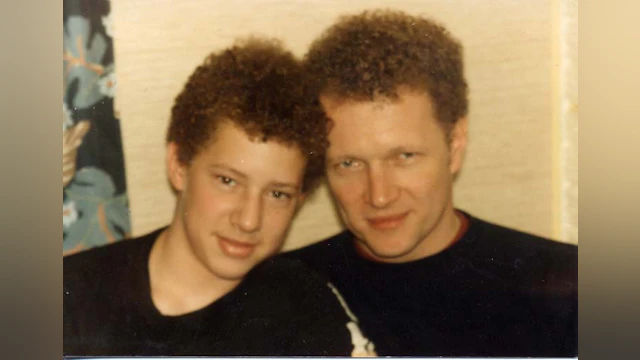As a college student returning to campus 35 years ago, a week or so after my father’s suicide, I found a card waiting for me in my dorm room. The card had been signed by everyone on my floor and many other students from the four-story dorm we lived in. I still have that card and cherish it to this day. The messages people had written told me how much they all cared about me and that they were there for me if I needed to talk.
The problem was, I didn’t know how to ask for help or how to begin to describe the pain I was in. Likewise, my friends and classmates weren’t sure what was okay to ask, or how to start a conversation about this sensitive subject. Over time, I learned how to bury the feelings of anger, guilt, and moments of overwhelming grief I was experiencing. My father’s death had come five days after my nineteenth birthday. I would lie awake some nights wondering why I wasn’t enough for him to live for, or if I had been a disappointment to him.
Rather than sharing these thoughts with anyone, I pretended everything was okay. I got so good at it that sometimes I even tricked myself into believing nothing was wrong. But there were days I picked up the phone to call my dad, only to remember I would never hear his voice again.

It took over 15 years and an intense period of my own mental health struggles to finally find my road to healing. My healing journey started after a three-month period of what I thought were heart issues, but which turned out to be nearly debilitating panic attacks. After ruling out all the possible physical issues, I went to see a mental health professional for the first time in my life.
I had been hesitant to see a therapist in the past because some part of me blamed the mental health profession for the death of my father. I know that’s illogical, but Dad had been to therapy and even sought in-patient treatment for a period of time: so, in my young mind, that system had failed him; and if that were true, I reasoned, how could it help me? After visiting a few different therapists, I finally found one I connected with, and they helped guide me through my anxiety issues, and unpack some of the emotions I had buried so long ago.
Eventually, I reached a point where I had successfully processed my loss well enough that I felt I might be able to help other survivors of suicide loss travel an easier road. In 2007, I began volunteering with the American Foundation for Suicide Prevention (AFSP). For the past year or so, I have served as the chair of AFSP’s national Loss & Healing Council. In this role, I have been blessed to play a part in the creation of AFSP’s new education program, Caring Communities: Guidance for Supporting Survivors of Suicide Loss.
The goal of Caring Communities is to help people learn practical ways to support a suicide loss survivor in different environments, such as in the workplace, communities of faith, or in schools — much like my classmates and friends had made an effort to do so many years ago, but with a better understanding of what to say and do, so they can confidently be there for the people who have suffered a loss.
Caring Communities provides participants with an understanding of suicide as a health-related issue, and educates people on how suicide loss is experienced differently than other causes of death. Because there is often still such stigma around suicide, many people feel unsure what to say — and end up saying nothing rather than risk saying the wrong thing. This program will empower people to feel more confident reaching out to a loss survivor, knowing they have tools to help them guide the conversation and avoid things that might be hurtful to say. The program will also educate participants on what resources are available to loss survivors, so they can point them in the right direction toward support, and let them know they are not alone in navigating their loss.

I know all too well how hard it can be to deal with a suicide loss, and I remember how alone I felt on my journey. How I wished I could find the courage to ask for help, but was afraid of being rejected in the same way I felt my father had rejected me in taking his own life. There are so many conflicting emotions people may experience when losing a loved one to suicide, such as anger, grief, and doubt, all of which I experienced. No one should ever have to travel this journey alone.
I hope that reading this will inspire you to reach out to your local AFSP chapter and request a Caring Communities presentation for your workplace, house of worship, or campus to better educate more people on how they can play a role in being there for those who’ve lost someone.
Our mission at AFSP is to save lives and bring hope to those affected by suicide. I truly believe Caring Communities can help be that beacon of hope for those struggling with this specific and complex type of loss. Healing does often take time and support — but it is possible. And we can all play a role in helping.
Learn more about Caring Communities: Guidance for Supporting Survivors of Suicide Loss here.